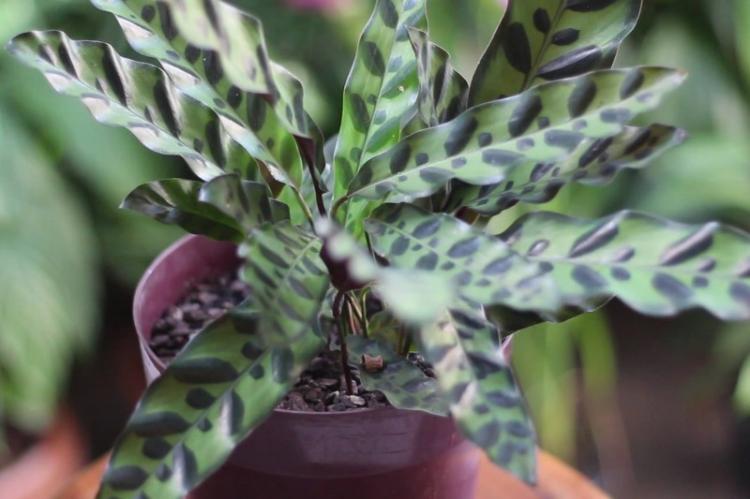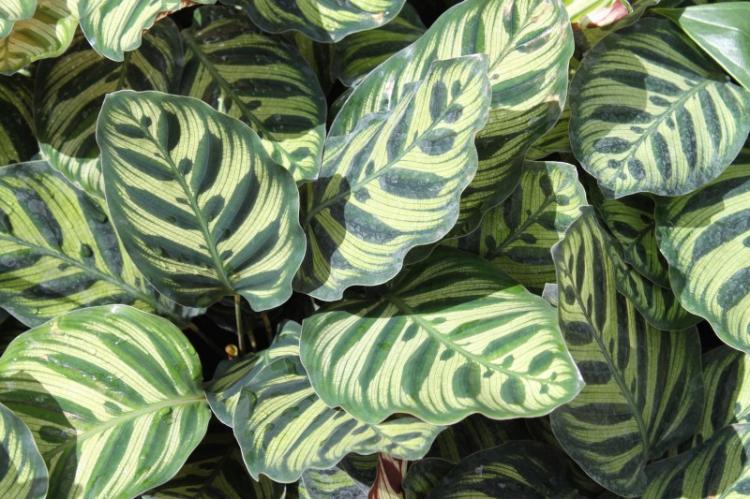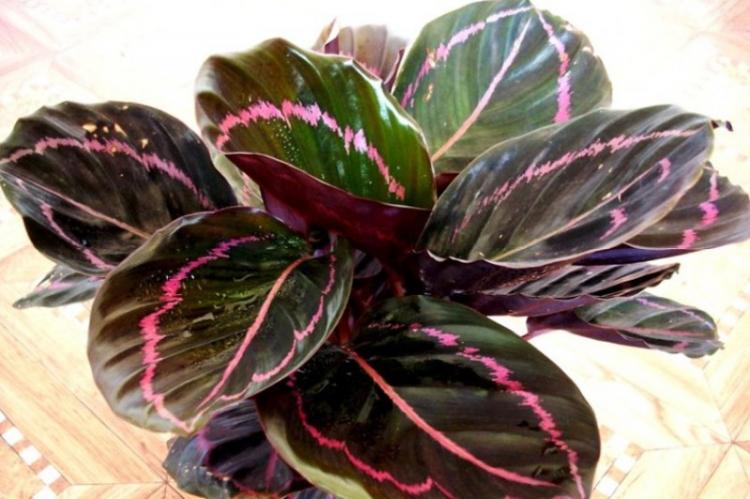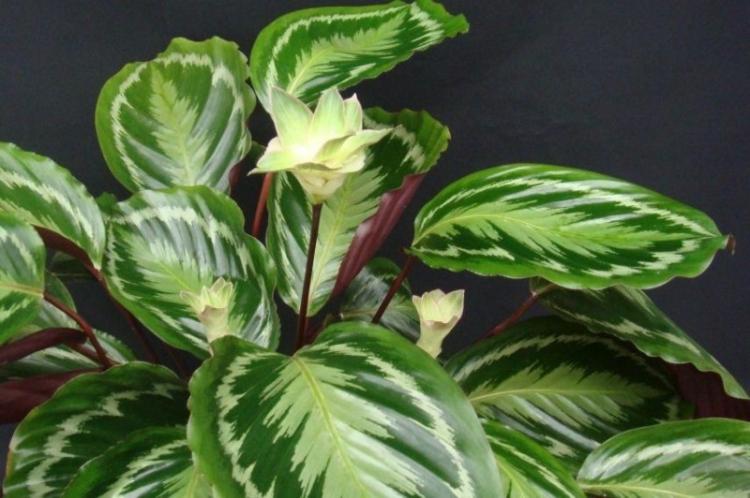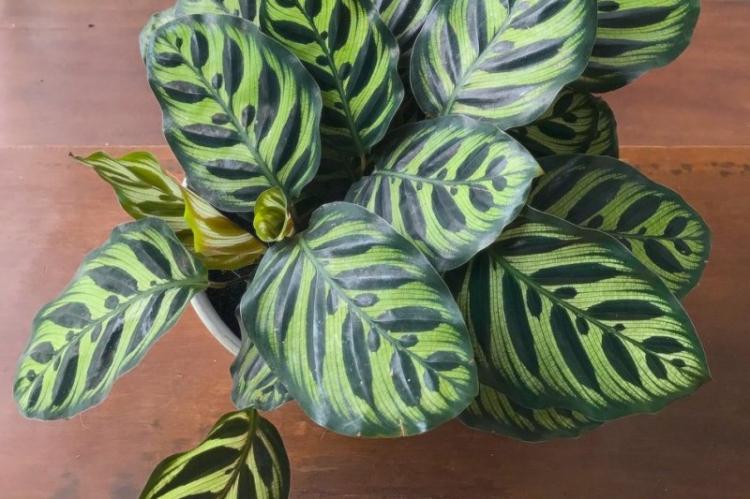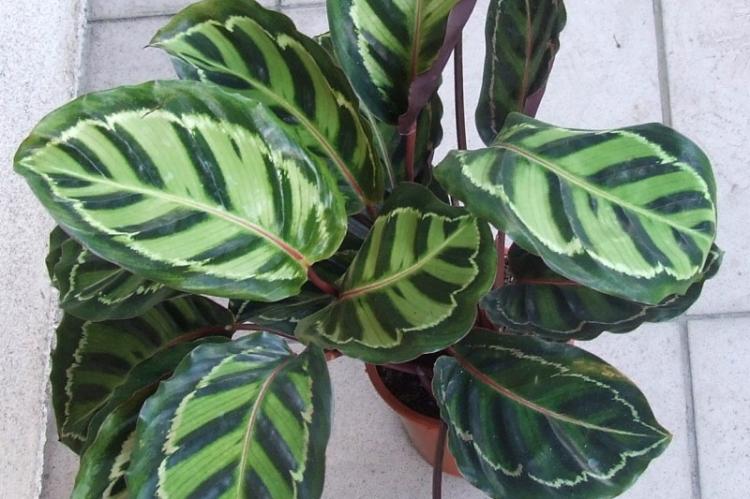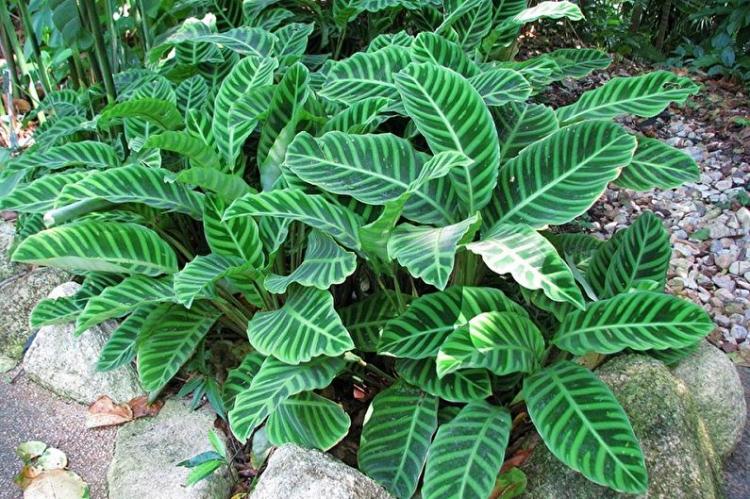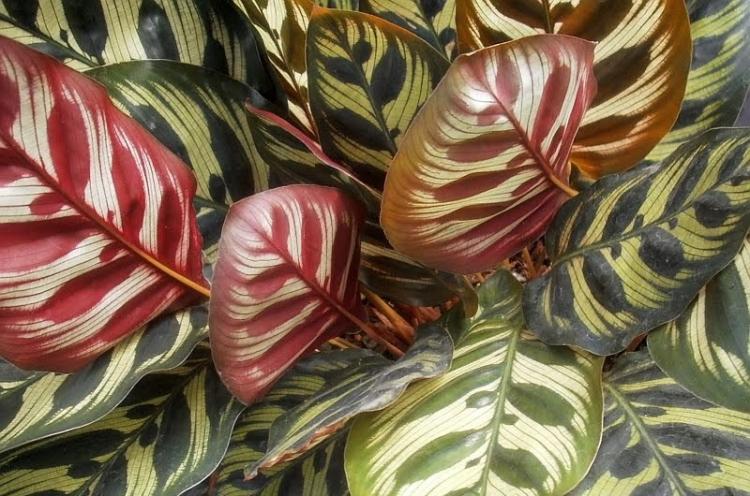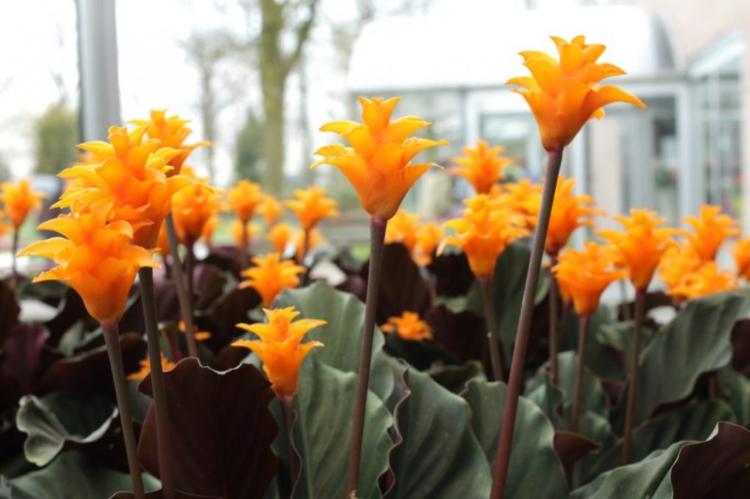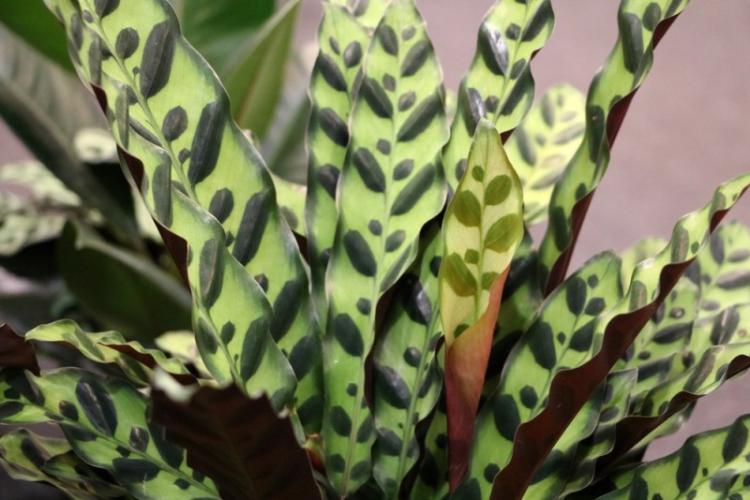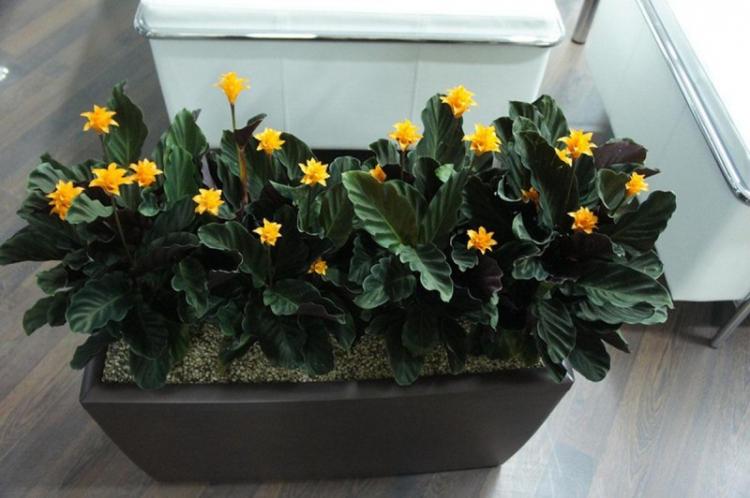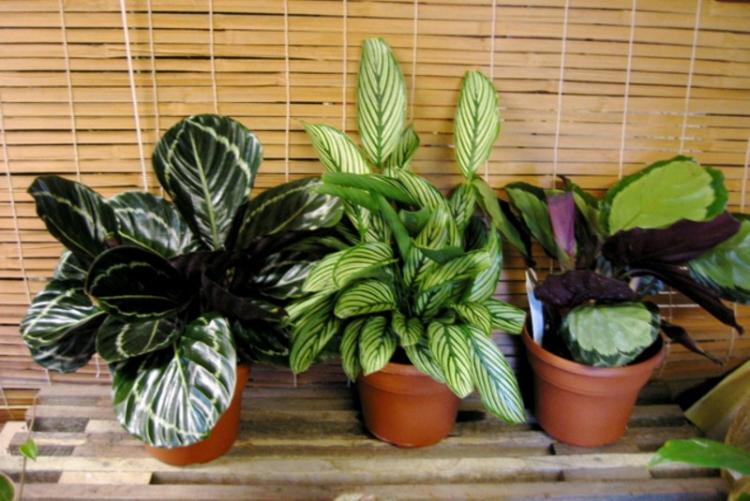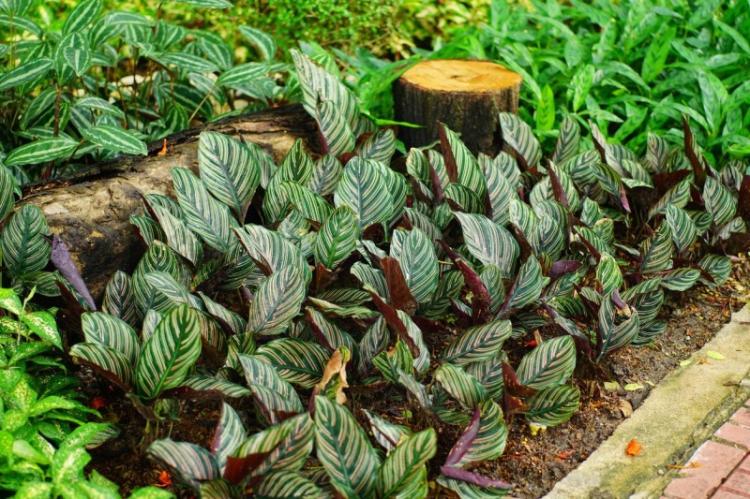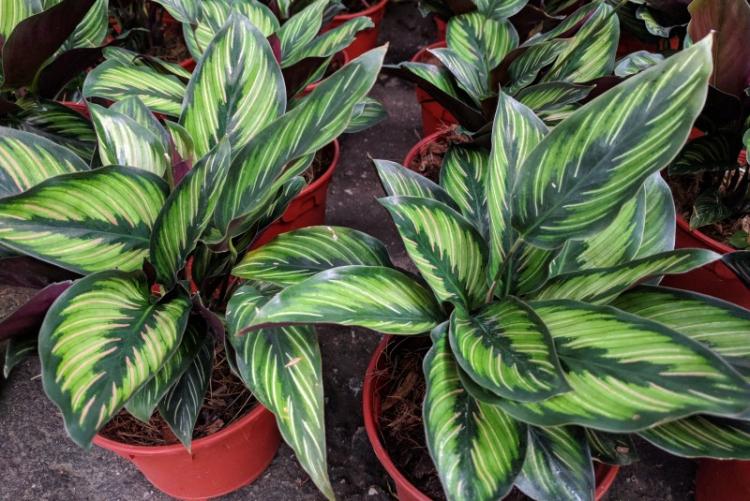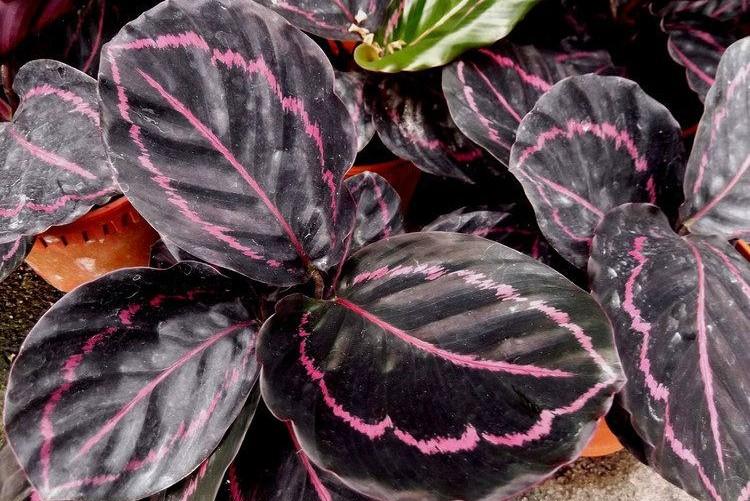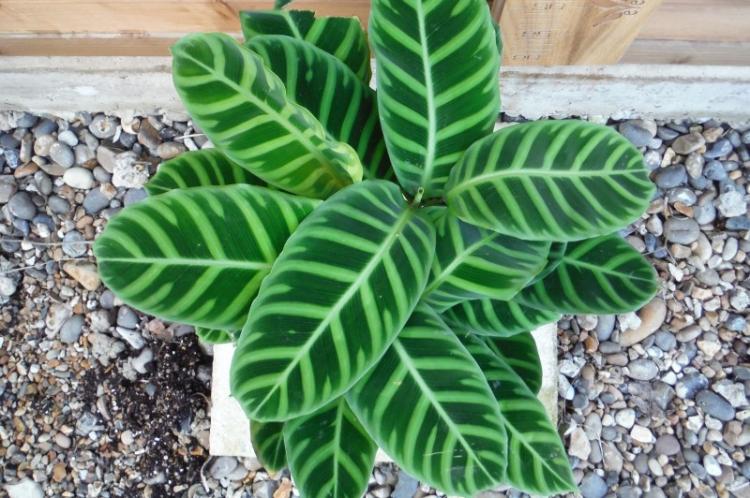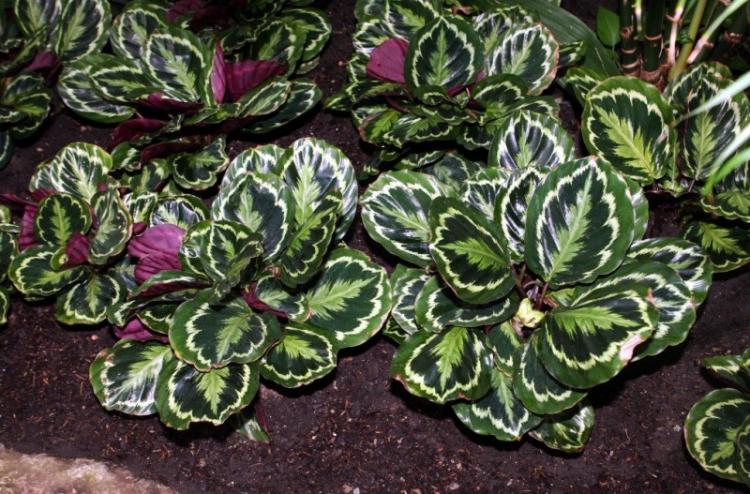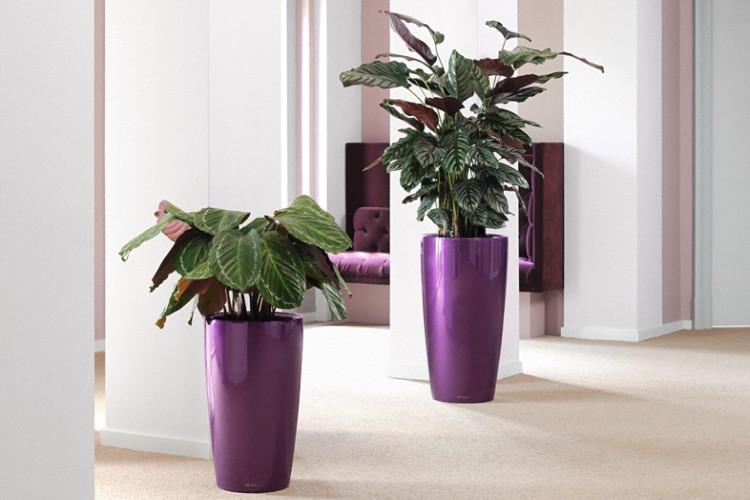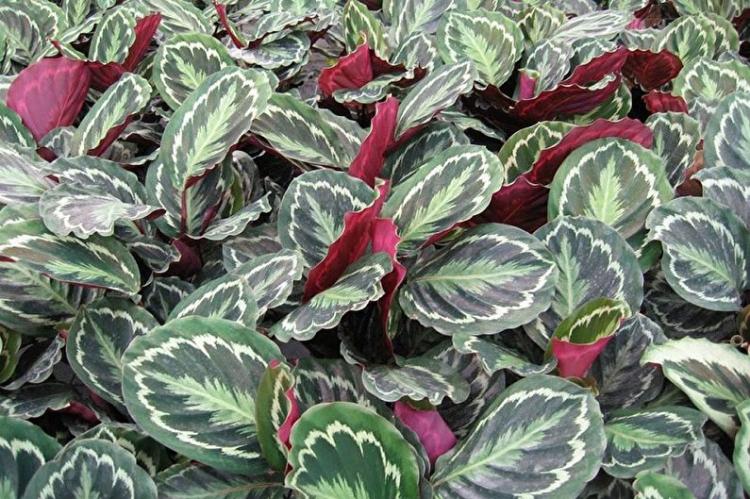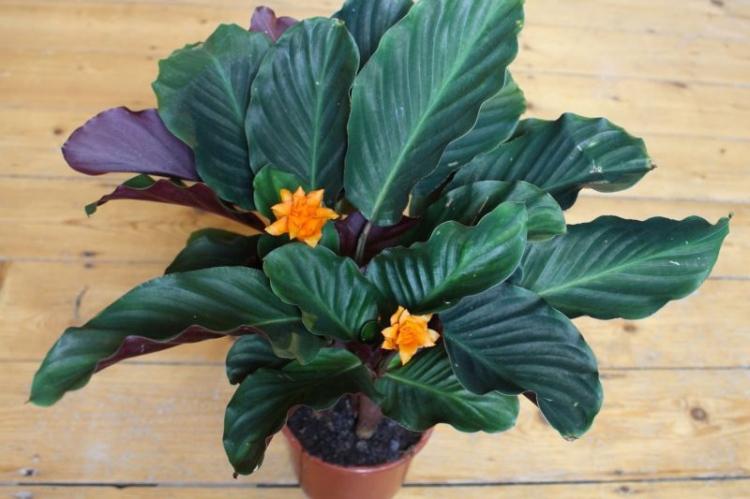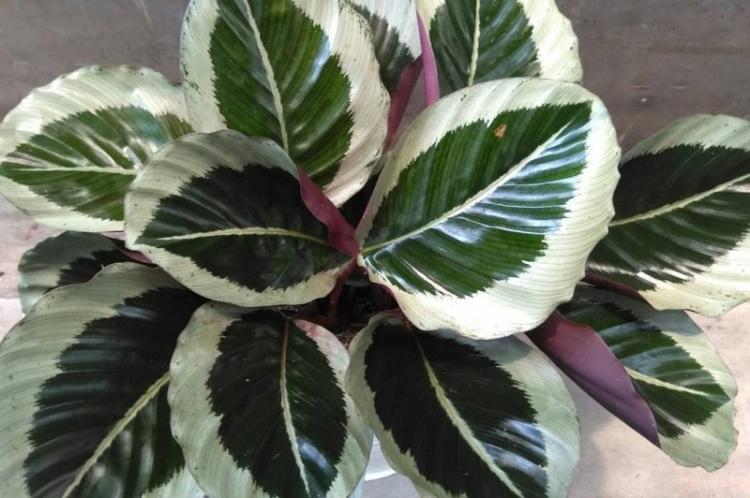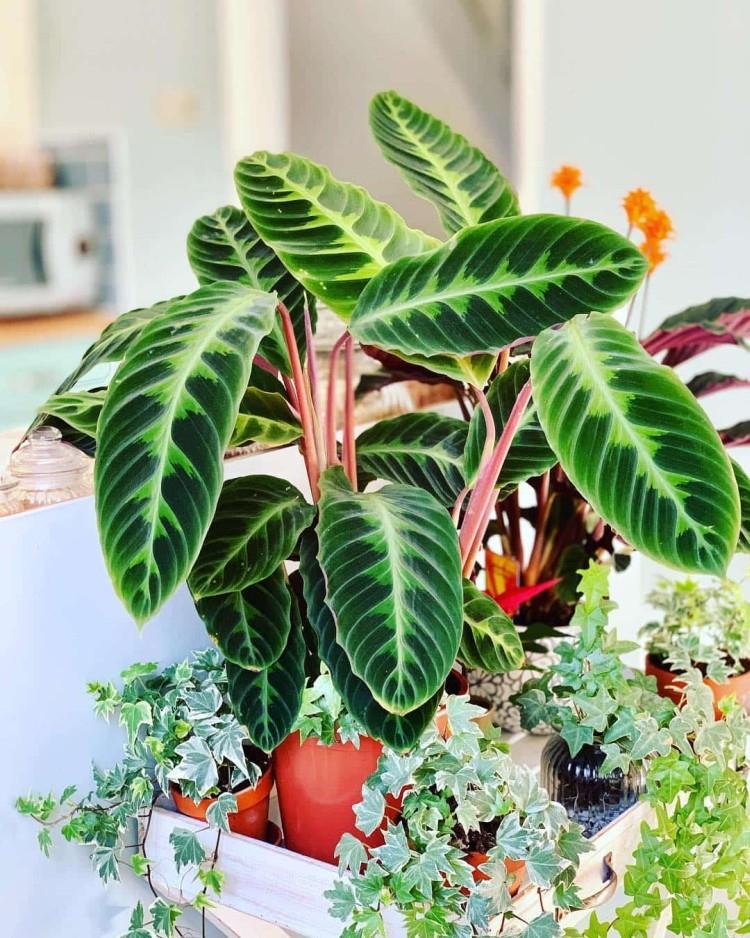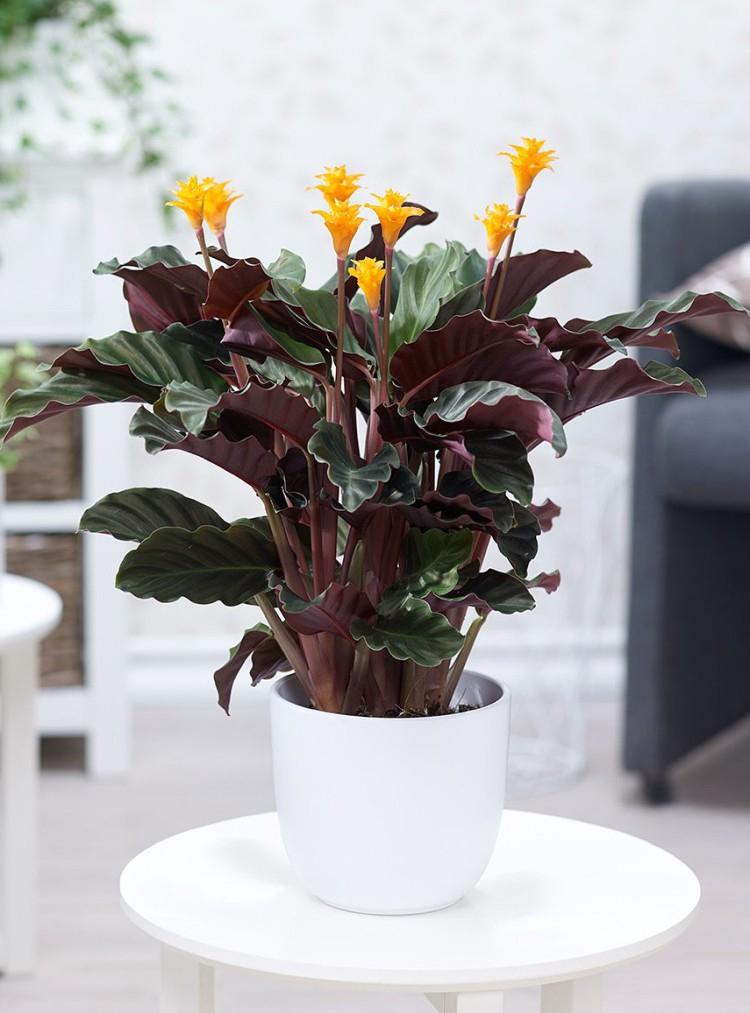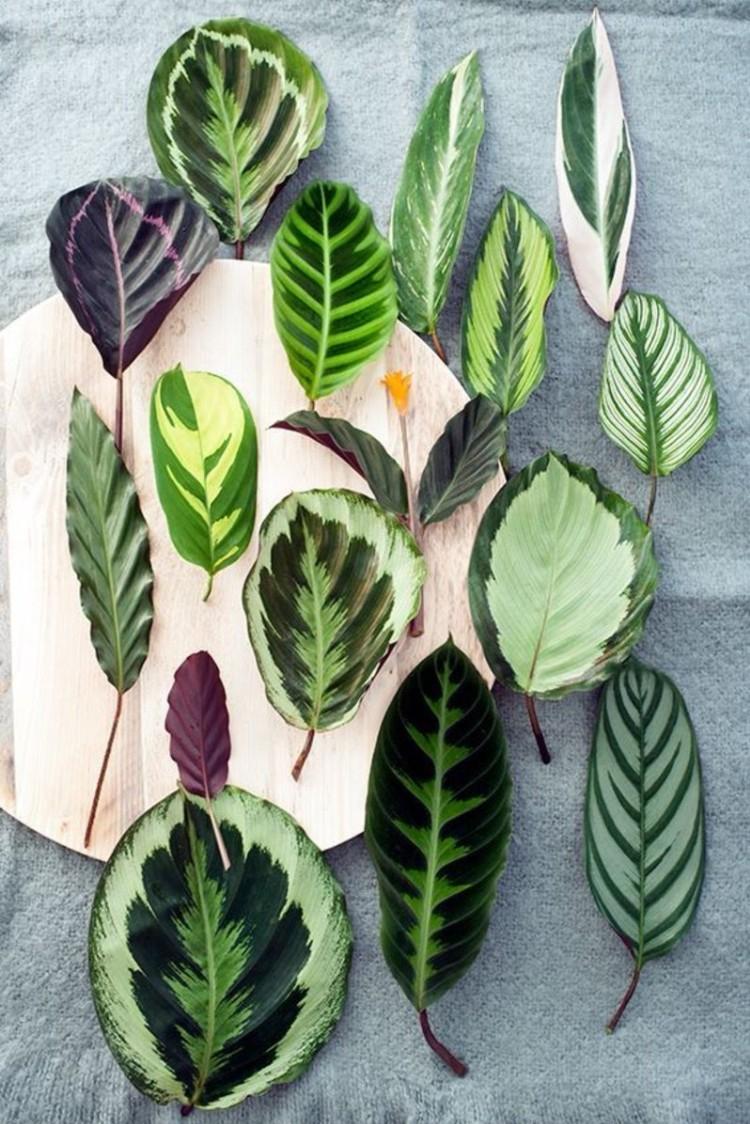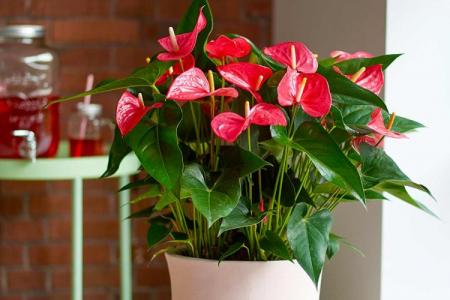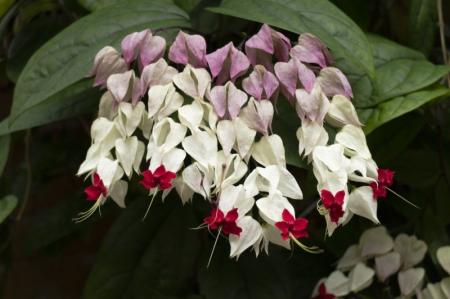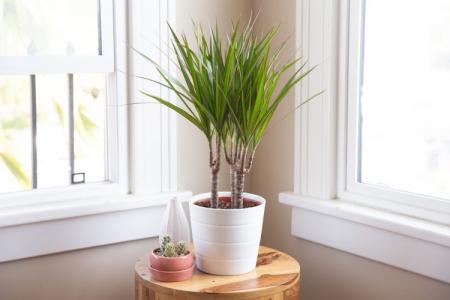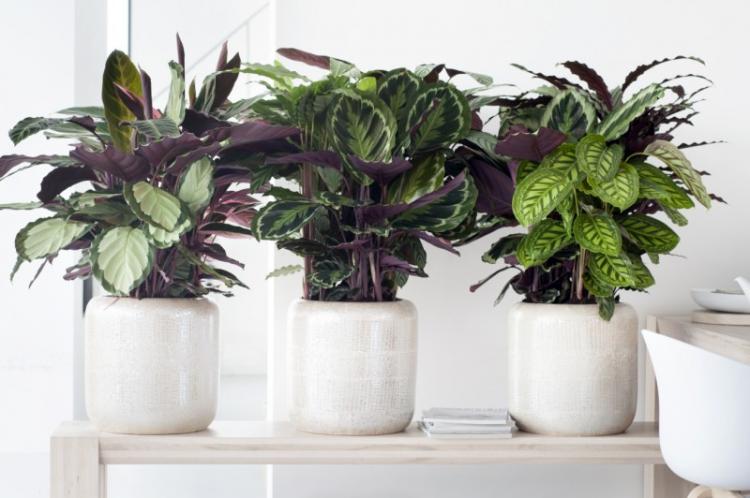
Delicate, neat and graceful calathea has long been a regular guest of modern apartments and houses. Growers especially appreciate its large and showy leaves, the shape and color of which depends on the variety. Calathea is impossible not to notice in the garden, shop or in the greenhouse. And if you are already interested in a capricious South American guest, then we will tell you how to create ideal conditions for her in a green corner!
general characteristics
Calathea is a vibrant rainforest inhabitant, but its area of distribution is not limited to South America. Different varieties of the arrowroot family cover all tropical regions: from Oceania to Africa.
As a rule, calathea is a vine or herb, other forms are rare. It is notable for its powerful and developed rhizome, which actively absorbs moisture and nutrients. Of all the tropical flowers that have migrated to our latitudes, calathea is one of the most moisture-loving.
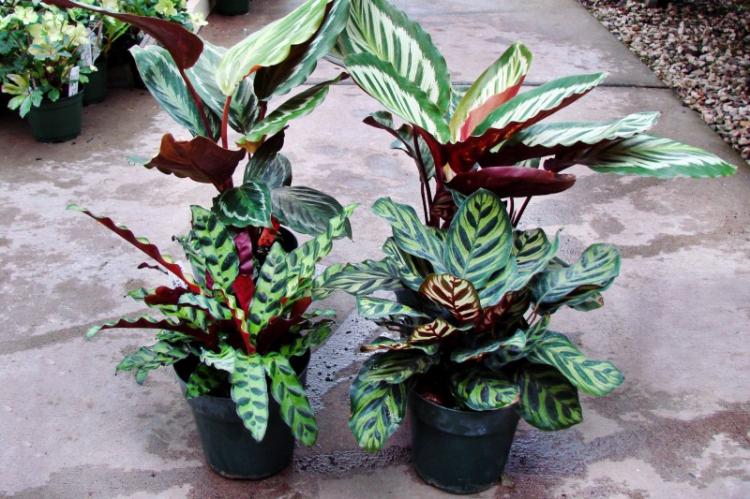
With a sufficient amount of light, heat and water, perennial calathea grows over the years. Even in a room, it can grow more than a meter with a voluminous and lush deciduous cap. Large plates of different shades stretch up to 20 cm in length.
Calathea leaves are monochromatic, variegated or painted in different shades on both sides. Their resilient and strong central core was previously used by basket weavers and even to reinforce the roof. Actually, the name of the flower is translated as "basket".
The flowering of calathea is inconspicuous and inconspicuous, so gardeners appreciate it as a deciduous plant. Thanks to a special natural mechanism, during the day, the plates unfold after the sun, and by night they fold and fall.
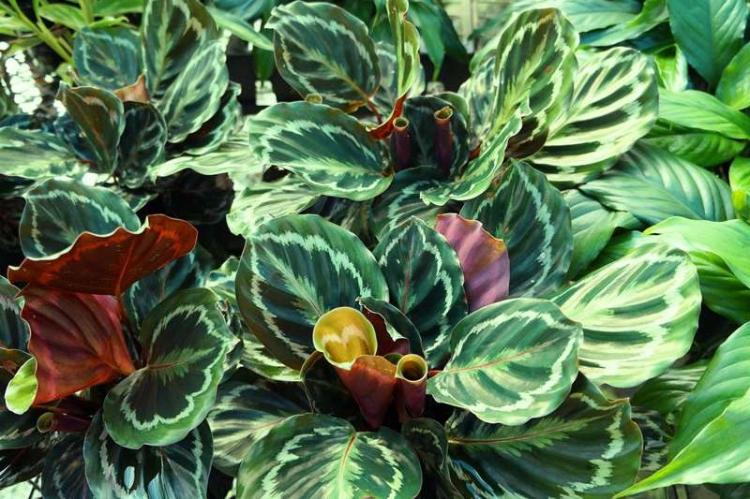
Types of calathea
There are tens and hundreds of calathea varieties in the world, but only a few of them coexist indoors and in temperate latitudes. Breeders even managed to find more decorative species with beautiful and vibrant colors.
Calathea is wonderful
A simple and undemanding variety - one of the most unpretentious among all types of kalata. This is a good choice for a home green corner, because oval patterned leaves with a red-purple underside are in no way inferior to more capricious relatives.
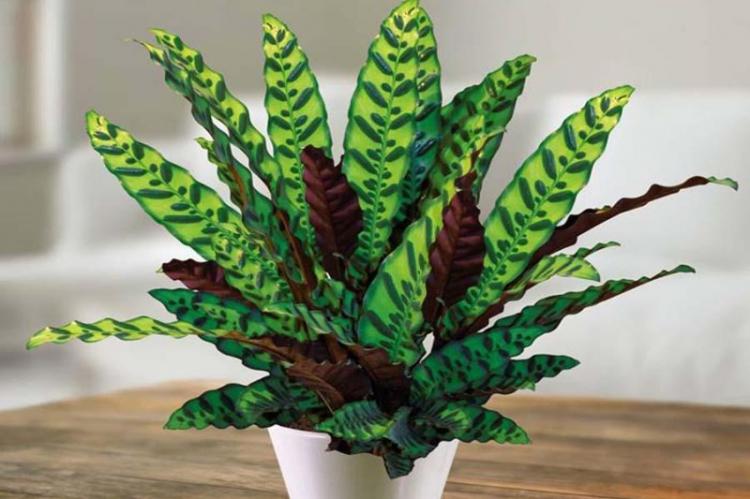
Calathea Crocata
One of the most popular varieties came to us from the Amazon coast and took root in apartments. Crocata belongs to the decorative kalatea with beautiful and showy orange flowers on a dark velvety background of foliage.
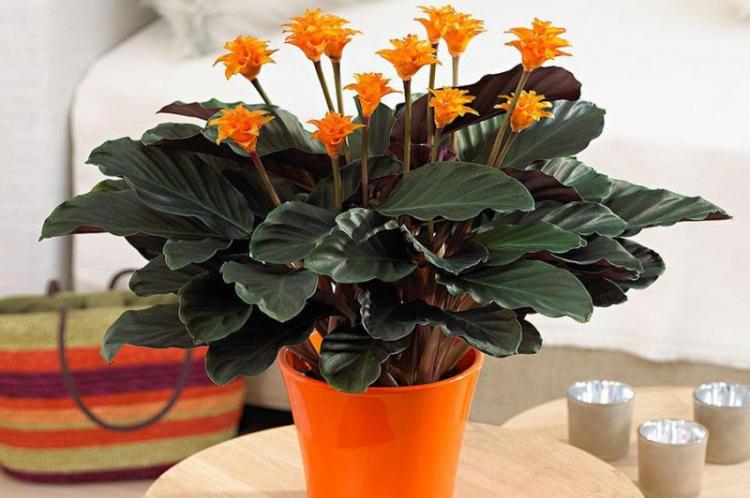
Calathea leopard
As you might guess from the name, the variety is notable for its unusual spotted color. The special arrangement of veins, spots and even yellow flowers resembles the color of a leopard skin.
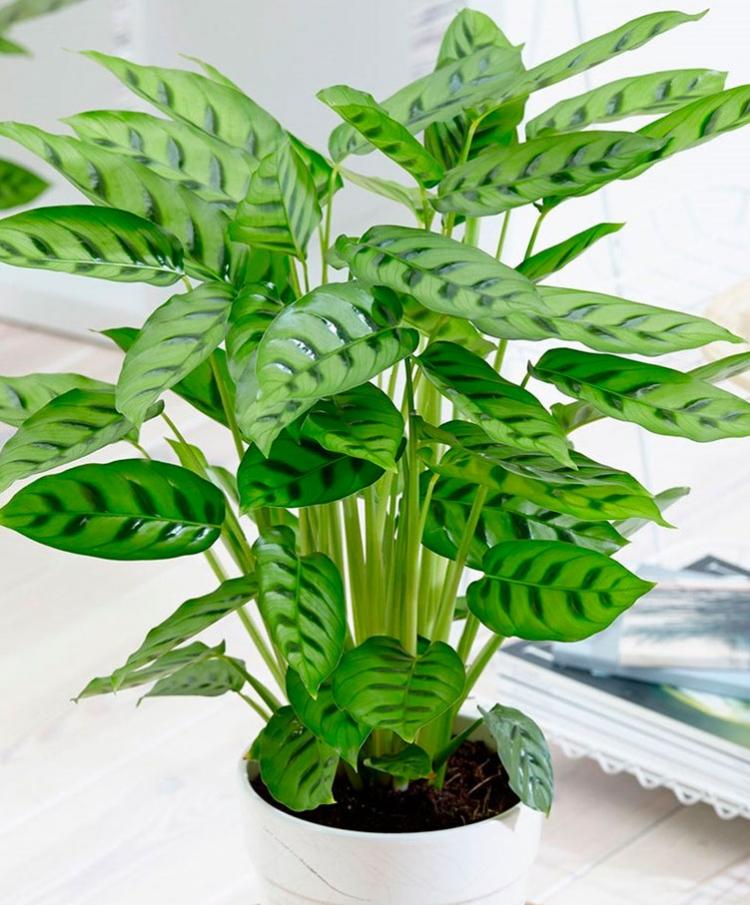
Calathea zebra
Like the leopard, the zebra-like calathea resembles the color of a wild animal. Long dark plates up to 40 cm are evenly covered with light light green or yellow stripes, contrasting against the general background.
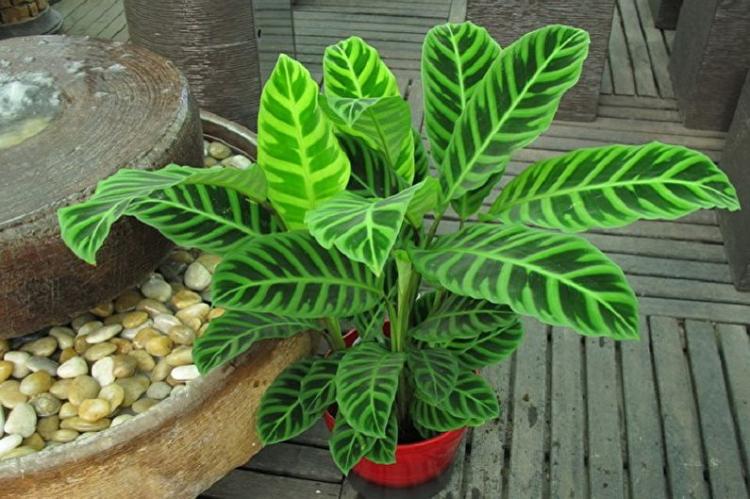
Calathea Varshevich
Long leaves are grouped into dense and large rosettes, against which delicate creamy spike-shaped inflorescences stand out on short dark red petioles. The leaf plates themselves are dark deep green with a purple underside and pale patterns.
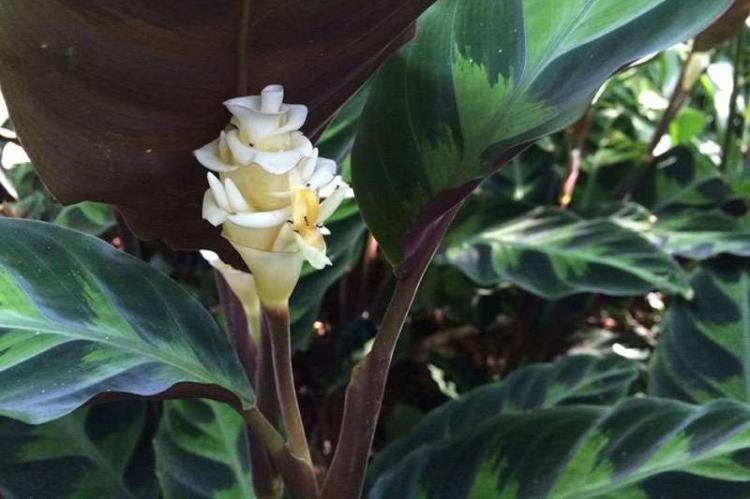
Calathea Bahema
Bahema is another persistent and relatively undemanding variety for indoor seedlings. It is notable for its large oval leaves with silvery patterns along the entire length. Large plates can be easily pulled up to 40 cm.
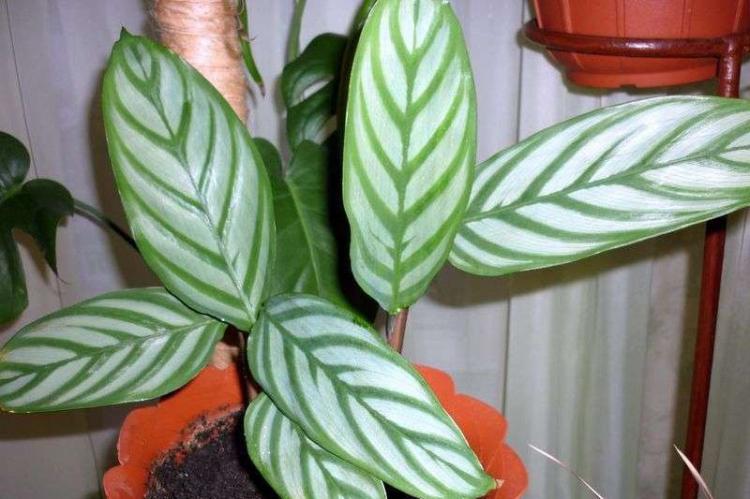
Calathea Makoya
The Brazilian tropical variety is rarely bred in apartments, but will complement seedlings well in a greenhouse. This is due to the fact that Kalathea Makoya tolerates spraying worse - it needs just moist air. Instead, it pleases with large and long leaves with a burgundy underside and a repeating pattern.
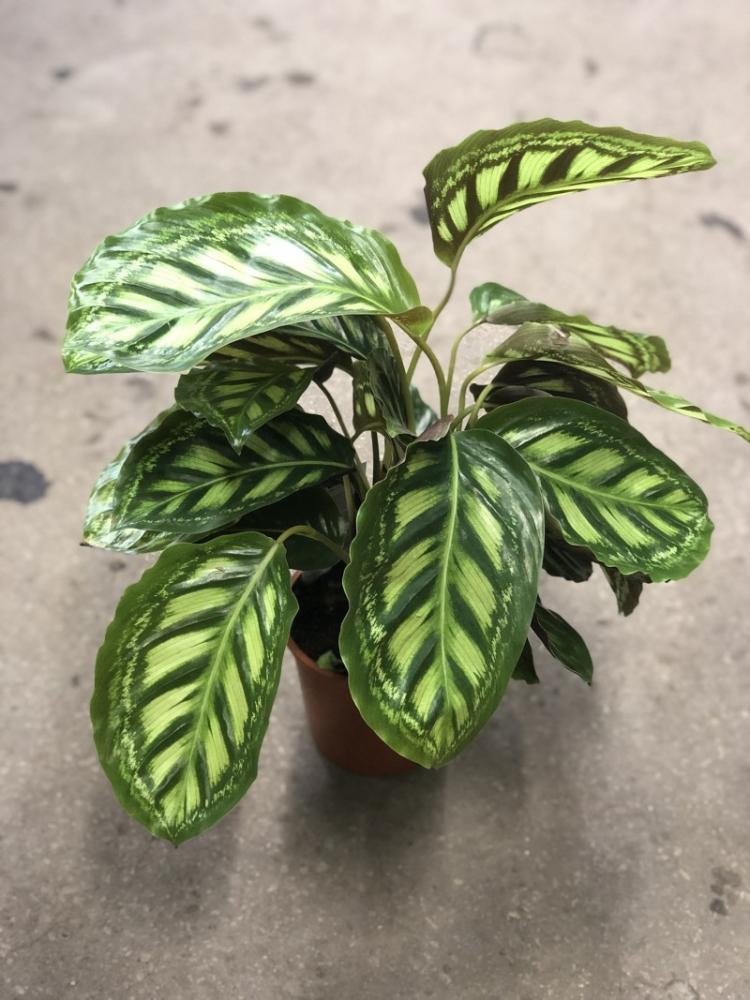
Calathea painted
Oval elongated plates are bordered along the perimeter with a dark edging, while the leaf itself is faded.The painted calathea is reminiscent of a work of art thanks to a thin and graceful bright vein in the middle of each leaf.
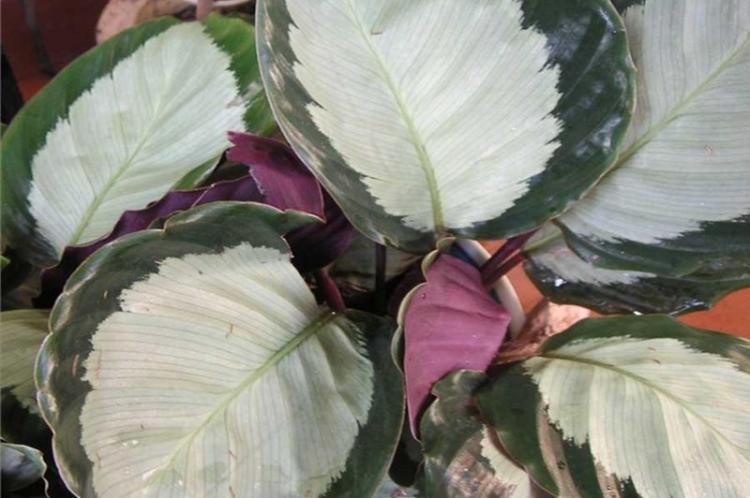
Calathea Roseopicta
The unusual calathea Roseopicta is interesting for its pinkish ornaments, which gradually fade as the flower grows. Different varieties differ in shades and their saturation: from faded Cynthia to colorful striped Illustri.
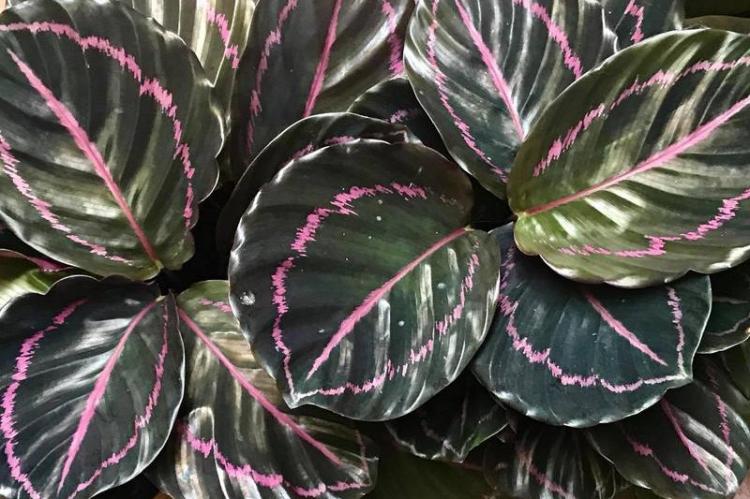
Calathea care
Calathea is quite demanding and capricious even against the background of its tropical counterparts. But you can cope with it if you choose the right soil, fertilizers and observe the temperature and humidity conditions.
Temperature
Calathea prefers high and stable temperatures - about 20-25 degrees in summer. It is not recommended to lower it below 12-15 degrees, even in winter, and this is with minimal watering. Avoid sudden changes, wind, drafts, radiators and other heat sources. Do not leave the calathea in the aisle or on the windowsill by the window that constantly opens.
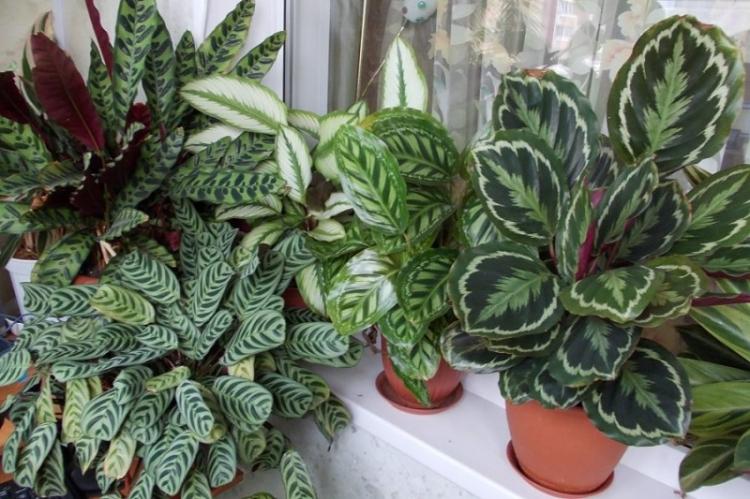
Lighting
The flower loves warmth and light, but too intense direct sunlight leads to burns. If the sun is not enough, the calathea loses its color, withers, and the leaves roll up and fall off. Ideal conditions are a semi-shaded corner of the room, which at the same time is protected from drafts.
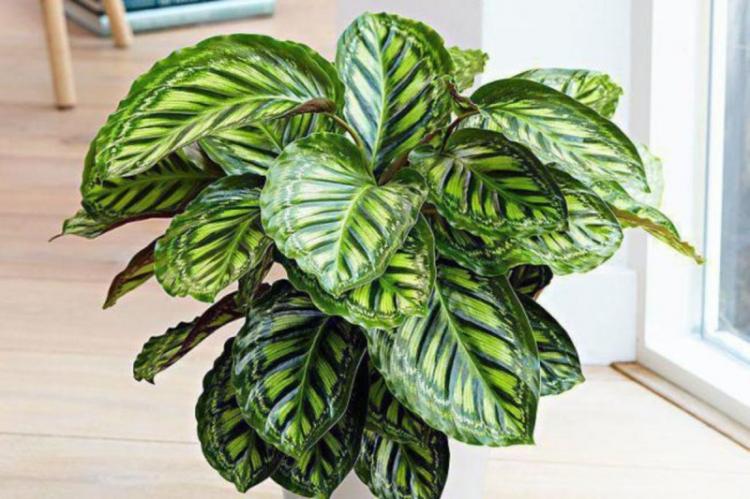
Watering
In nature, the moisture-loving calathea feels best on the coast of islands and rivers, so keep an eye on the humidity and ensure regular watering. In the summer, spray the flower with a small spray bottle - it is neater and more delicate than a shower.
It is not necessary to spray only varieties with pubescent leaves - this will damage their texture. In this case, humidify the air around the calathea, shaking off the dirt with a soft brush and occasionally bathe the flower.
For irrigation, take only clean, settled water and in no case allow stagnation. Cover the stand with moss or pebbles and moisten it so as not to overflow the flowerpot and to avoid rotting of the root system.

Fertilizers and feeding
Calathea needs the regular introduction of specialized fertilizers with a complex of useful elements. During active growth, add calcium and nitrogen separately every couple of weeks. Intensive fertilization of the soil continues after flowering - minimize it gradually.
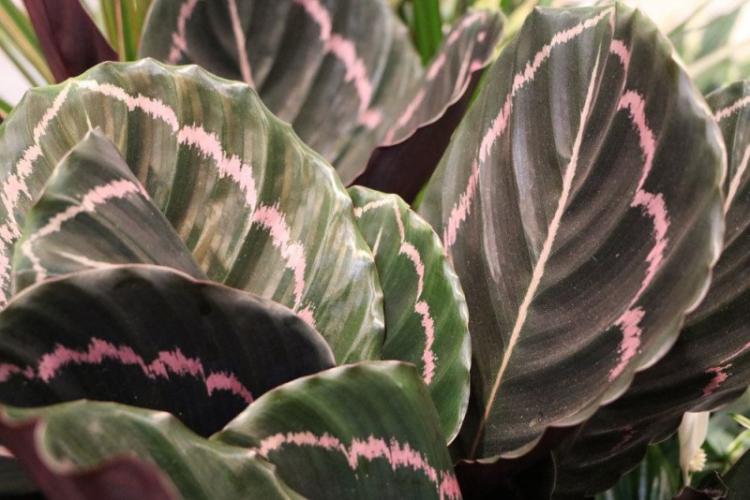
Pruning
Calathea is spectacular in its natural form, so there is no need for regular pruning. But be sure to remove dried and damaged leaves, otherwise this often leads to the appearance of infection or the development of a fungus.
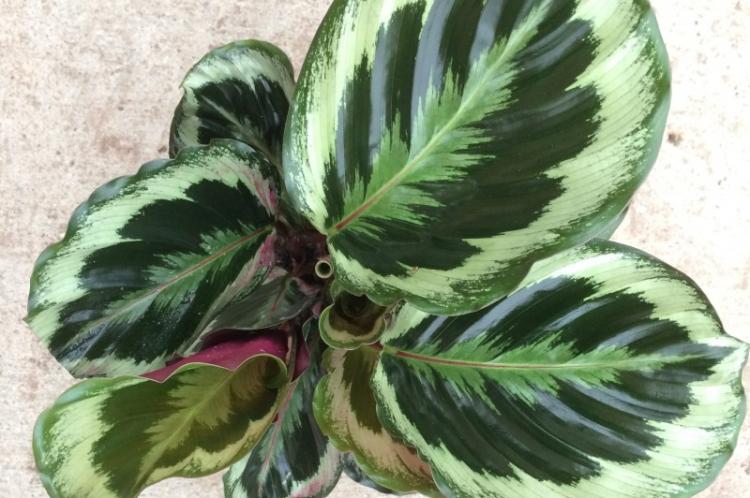
Planting and breeding calathea
Using seeds for planting calathea is too difficult and impractical. At home, it reproduces excellently right during transplantation by dividing the rhizome. Just remember to treat the cuts with charcoal for an antiseptic effect.
The second method is to separate strong cuttings with a root and several leaves from the mother plant. Immediately after disembarkation, they require a stable temperature of up to 25 degrees and high humidity. So take care of the mini greenhouse and greenhouse conditions before planting.
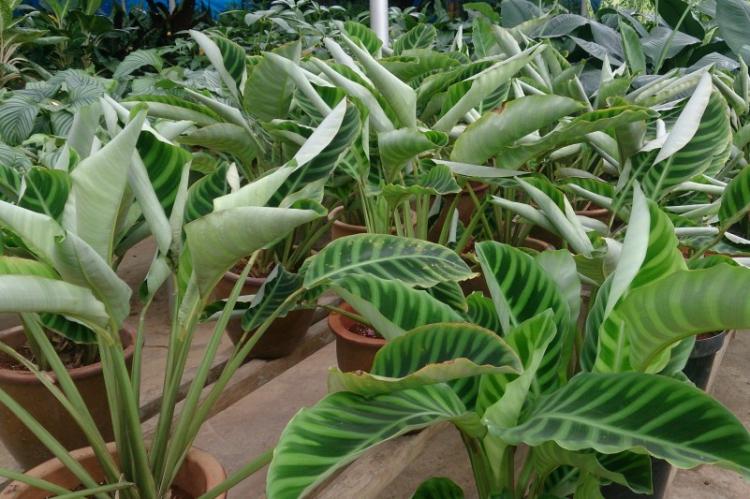
The ideal soil for planting Calathea is moderately nutritious, light and necessarily loose and breathable. Leafy soil and peat substrates or professional formulations for flowering plants are suitable for you.
Transplant a young calathea every spring, but an adult is useless. It is enough to update the pot and the ground as it grows and needs - on average, once every 2-4 years.
If the rhizome of the flower begins to protrude above the ground or seeps through the drainage plants at the bottom, it means that it is already cramped and it is time to change the flowerpot. Keep in mind that delicate calathea does not tolerate digging, therefore it is transplanted together with an earthen lump by transshipment.
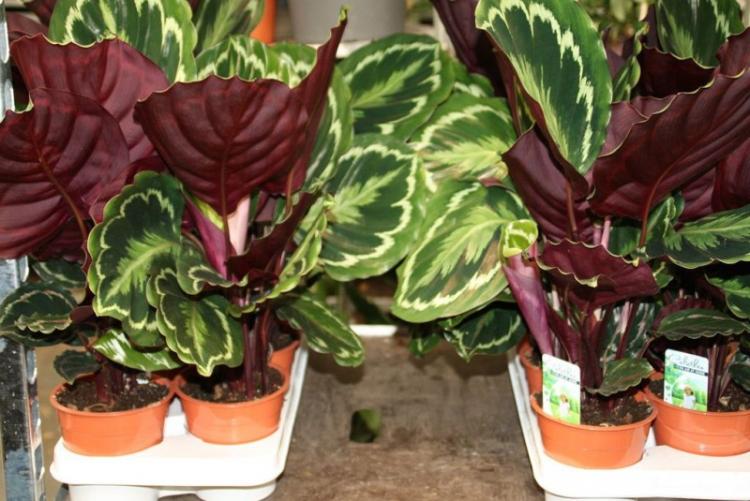
Pest and disease control
Pests and parasites are very dangerous for the sensitive and delicate calathea. Aphids, scale insects, thrips are especially fond of juicy young leaves, and it is rather difficult to notice them in the initial stages.First, wash the flower with herbal infusions or soapy water, and then treat with special chemical insecticides.
If the lower leaves turn yellow and fall off, it may be a natural seasonal process. But if the same thing happens with the upper ones, most likely the flower does not have enough moisture and watering. Dry tips are a sure signal to humidify the air and spray the foliage.
If the flower withers and dries, and the leaves wrinkle and curl, it may be too cold. Dry faded spots are sunburn and are especially easy to get over wet sprayed plates.
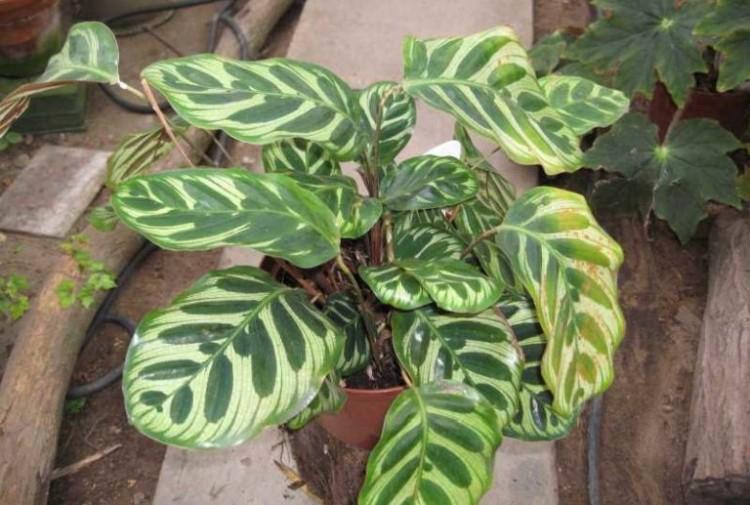
Calathea - photo
Beautiful and graceful calathea does not need additional recommendations. But we still prepared a selection of photos with interesting ideas for using a flower in the interior and not only!
